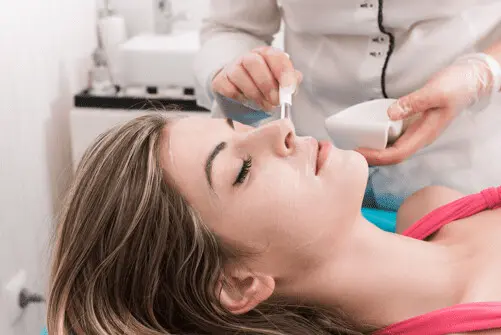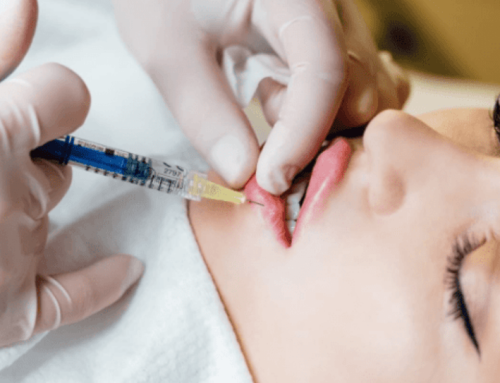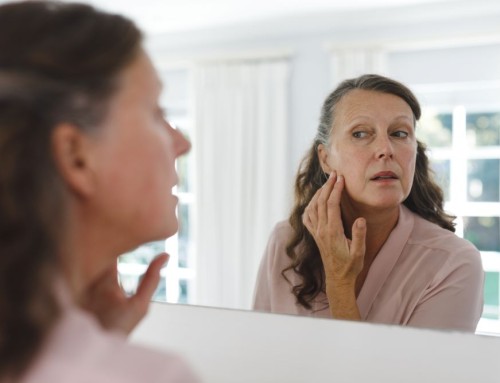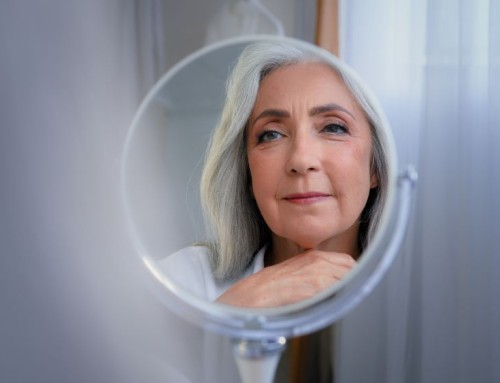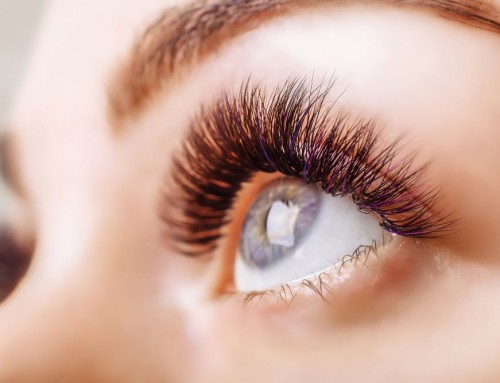The Chemical Peel: Benefits & Facts
At Thaxton Plastic Surgery, we can provide you with an array of surgical procedures to help you achieve your desired look, but we also have some spa treatments that provide you with a more youthful glow. A chemical peel is one option that can improve the look of your skin.
What Is A Chemical Peel?
A chemical peel is a type of skin resurfacing. For this procedure, we apply a chemical to your facial skin to help remove the top layers of skin. The chemicals we used might include glycolic acid, salicylic acid, lactic acid or perhaps carbolic acid, also known as phenol. The chemicals that we use depend upon the level of chemical peel, and there are three levels of chemical peel – light, medium and deep.
The Light Chemical Peel
A light chemical peel is a quick procedure that removes just the top layer of skin. It can be used to reduce the appearance of fine lines as well as to even up the skin tone and reduce the appearance of some minor acne scars. For this procedure, we simply apply the chemical solution (usually glycolic or salicylic acid) to the skin, allow it to work its magic and then wash the skin with a neutralizing solution to remove all traces of the chemical. This treatment might sting a bit, but you shouldn’t feel more than mild discomfort.
When it comes to a light chemical peel before and after, you should expect some redness and tightness of the skin and perhaps some swelling but this usually fades within a few days. Patients typically repeat light chemical peels every few months to achieve desired effects and they often find that the redness and irritation are less noticeable after each subsequent peel.
The Medium Chemical Peel
The medium chemical peel goes a bit deeper and removes layers of skin from the top layer (the epidermis) as well as a layer from the middle skin layer (the dermis). This level of peel can reduce the appearance of wrinkles and more prominent acne scars than the light chemical peel.
For this procedure, the chemicals are a bit stronger (usually trichloroacetic acid), and we apply cool compresses to the skin a few minutes after the chemicals are applied. Patients typically report stinging or burning sensations for about 20-30 minutes.
For this level of peel, we do not use any neutralizing solution to remove the chemicals and the chemical peel before and after is quite different. With a medium peel, your skin will turn red (sometimes brown) and will begin to peel about 48 hours after the chemical solution was applied. This peeling process lasts for about a week during which time you should moisturize your skin often.
The Deep Chemical Peel
This level of chemical peel is a much more involved procedure than a light or medium peel, which are quick procedures. However, light and medium peels don’t provide the level of results that a deep chemical peel can provide, and you will need to repeat the light or medium chemical peels whereas the results of the deep peel are long-lasting, sometimes for as long as ten years. The deep chemical peel can remove deeper facial wrinkles, sun damage, scars and even some pre-cancerous growths.
The downside of the deep chemical peel is that it does require several weeks of pretreatment to get your skin ready for the chemical that we use for a deep peel, which is called phenol. Additionally, patients need to be sedated for the procedure. Once sedated, we carefully cleanse the skin and apply the phenol. After neutralizing the phenol with water, the skin is covered with a special ointment that locks in moisture and reduces pain.
With a deep chemical peel, the chemical peel before and after also is more extreme and there’s about a two-week recovery period before you can return to work and normal activities, and you can expect to feel some discomfort for at least a few days and sometimes a few weeks. Painkillers are sometimes prescribed to reduce your pain. You will notice redness, peeling and crusting on your facial skin and while the swelling, crusting and peeling should abate in a couple of weeks, some redness is common for several months after treatment.
Again, while the recovery time is substantially longer with a deep chemical peel, the results last for up to ten years. With light chemical peels and medium chemical peels, you will need to repeat the procedure every few months. However, if your skin issues are minor, light and medium peels are better options.
Chemical Peel Aftercare
Aftercare instructions for each level of chemical peel vary, but, in general, it is important to keep your skin moisturized according to your doctor’s instructions. Avoiding sun exposure also is crucial with any level of chemical peel. Wearing moisturizer or makeup with broad-spectrum SPF coverage is crucial and if you don’t wear either moisturizer or makeup, you will need to apply sunscreen to your skin.
We recommend that all of our patients, whether or not they have had a chemical peel, wear sunscreen or products with sunscreen on their face. While our skin changes as we age, sun damage accelerates these changes, and sun exposure also can cause skin cancer to develop. We always recommend that patients wear sunscreens, avoid sun exposure during peak daylight hours and wear a hat if they must be outside during peak hours.
Good Candidates For Chemical Peels
In general, we recommend chemical peels more for our clients with fair skin. Those with darker skin might enjoy positive results, but in some cases, you might notice a more uneven skin tone after a chemical peel. Chemical peels can help reduce some wrinkles, but if you have severe wrinkles or sagging skin, a chemical peel won’t improve your look.
Other Facial Treatment Options
If you aren’t a good candidate for a chemical peel, don’t worry, we have many other options to help you look and feel your best. For instance, many patients enjoy the results of a simple microdermabrasion facial. This sheds off layers of dead skin and gives you a more youthful glow.
This is a great treatment for patients with oily or dull skin, enlarged or clogged pores, fine lines or mild complexion problems. Most patients will undergo about eight microdermabrasion treatments for optimum results, but there’s no downtime and while you might experience some redness, it won’t be as noticeable as with a chemical peel.
A SkinPen® microneedling procedure is another option to consider. With this procedure, also known as collagen induction therapy, we use a tiny needle to penetrate the skin, and this stimulates collagen and elastin production and thus restores a more youthful glow to the face. It only takes about 30 minutes for this procedure and its safe for all skin types and skin tones.
Skin resurfacing with Intense Pulse Light (IPL) is yet another option that can reduce the appearance of sun damage, hyper-pigmentation, some acne and even small vascular lesions. IPL will rejuvenate the skin and also can permanently reduce facial hair. IPL is sometimes called a photofacial. With this procedure, which we can apply to your face or neck, we use multiple wavelengths of light energy to target areas of concern, such as brown spots or freckles.
Of course, in addition to these treatments, we also offer treatments such as Botox®, ThermiSmooth® and Juvéderm® to help reduce the appearance of fine lines and wrinkles. Dr. Thaxton also can provide you with surgical options such as a face lift, brow lift and eyelid surgery.
If you aren’t quite sure which options are the best fit for your skin, your needs and your desired outcome, give us a call and let’s book a consultation. Whether you opt for a chemical peel, Juvéderm or some other treatment, we will do all we can to help you look and feel your best.

